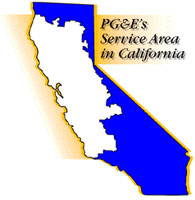California is proving that even the most populous state in the US can quickly reach high levels of renewable energy.
A few years ago, all three major utilities reached the milestone of providing 20% of electricity from renewable sources, and now the largest of them – PG&E- announced it has reached 30%.
It easily surpassed the state’s Renewables Portfolio Standard, which requires 23.3% renewables this year and 33% by 2020. And it’s in a strong position to meet the next hurdle of 50% by 2030.
"We stand ready to help Governor Brown deliver on the new goal of 50% renewables by 2030 because we want to demonstrate to other states that a clean energy future is achievable, and essential for future generations," says Geisha Williams, President.
She notes that 215,000 small solar systems are connected to its grid, and under its new Solar Choice program, people can choose to buy 50-100% of their electricity from solar without installing their own systems.
Because the utility relies on so much renewables, emissions are a third of peers nationwide.

PG&E Is Still A Utility, However
This success hasn’t prevented PG&E from trying to squash solar, using the same arguments and lobbying for the same policies that just killed solar in Nevada, and threatens solar in dozens of states.
All three of California’s major utilities fought hard to add charges for solar owners this year, with the same stale, false argument: "Solar owners are free-loaders, not paying their fair share for maintainence of the grid." That means big monthly fees, of course, and paying people as little as possible when they send excess electricity to the grid (net metering).
PG&E proposed a monthly grid charge of $3 per kilowatt, and cutting net metering prices paid to solar owners from the retail price of $0.17 per kilowatt-hour to $0.097.
Funny, how ALEC’s "Updating Net Metering Policies Resolution," outlines the same goals.
But this is California and the solar industry won this round. California’s Public Utilities Commission kept the retail net metering rate through 2019, when they will re-evaluate it. Monthly charges also didn’t go through.
This week, the three utilities filed applications asking regulators to reconsider the decision.
Rather than being "free-loaders," studies show that net metering results in $92 million in annual benefits to California ratepayers: solar produces the most energy during peak demand when electricity is most expensive; alleviates pressure on transmission infrastructure; and avoids the expense of building new power plants.
California is the top state for solar in the US.
